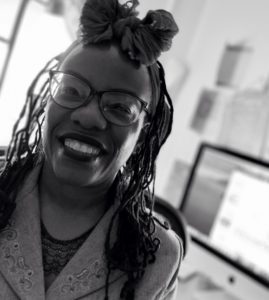[cs_content][cs_section parallax=”false” style=”margin: 0px;padding: 0px;”][cs_row inner_container=”true” marginless_columns=”false” style=”margin: 0px auto;padding: 0px;”][cs_column fade=”false” fade_animation=”in” fade_animation_offset=”45px” fade_duration=”750″ type=”1/1″ style=”padding: 0px;”][x_image type=”none” src=”https://www.innerstrengthfoundation.net/wp-content/uploads/2017/03/william-stitt-119515-sm.jpg” alt=”” link=”false” href=”#” title=”” target=”” info=”none” info_place=”top” info_trigger=”hover” info_content=””][/cs_column][/cs_row][/cs_section][cs_section parallax=”false” style=”margin: 0px;padding: 0px;”][cs_row inner_container=”true” marginless_columns=”false” style=”margin: 0px auto;padding: 0px;”][cs_column fade=”false” fade_animation=”in” fade_animation_offset=”45px” fade_duration=”750″ type=”1/1″ style=”padding: 0px;”][cs_text]Being in high school is challenging. I remember the awkwardness and the bigness of the world to my smallness. And in my smallness trying to be big and sometimes getting away with it. Being one of two thousand students in my city high school didn’t help. I wondered if any of the teachers knew my name and I remember going to the guidance counselor just once and her college advice was rote and perfunctory, and hardly a match for my adventuresome and individual self. I had a purpose and the gumption to go after it, even as lost and isolated as I felt what seems like all of the time. My parents and I spoke different languages—not literally—but in actuality. I thought the idealism of the sixties was well gone and I was listening to music of the past. It’s only now four decades later as I tune my streaming player to hits of the seventies do I realize I grew up in the middle of an era. And the kids these days are doing so too.
They don’t realize history is occurring all around them. They don’t realize they are a generation of firsts and a generation of rising social movements that have a power and momentum needed to make systemic change. The first black President of the United States is memorialized with a quote on the wall of South Philadelphia High School. Black Lives Matter emerged on their watch. The threat to the multi-national diversity of our country is occurring now too. As is the largest women’s march ever in this country and around the world. This is the stuff that history books look back on and call sea changes. Such big shifts they can’t be measured. These kids are living in the midst of these times. Yet what they know is generally so small, generally just what is right in front of them. What they know is high school. Friends and grades. Driver’s licenses and questions about their future. All they want is for summer vacation to come already.
The Inner Strength mindfulness classes try to insert some context, depth and perspective into their world. The march of life goes on and those who can list their heads above the fray and look down to reflect on their experience have the chance to really take in and respond in an unexpected and holistic way. Today in class with some freshmen, we were talking about the evolutionary development of the brain. We looked at the parts of the brain and their functions, and the adolescent brain and its growth period. We looked at evolutionary conditions that created certain physiological developmental triggers and stages. We looked at what propels human adolescents to take risk, to bond with or feel swayed by peer pressure, and we talked about positive risk, positive peer influence, positive support.
The kids talked with each other and then a group rep came to the front of the room to report on what they observed. It is times like this when it really comes home how precarious the world has become and how many of our children have scenarios on their minds that I wish had never even made it into the movies let alone into their fears and recent memories.
As one young fellow was reporting his group’s experiences of the adolescent propensity to take risks, he said, “One of our group members said going into places they shouldn’t have been.”
“Why did he do it? What made him seek those places out?”
“Risk and doing what he shouldn’t have been doing.”
“What happened?”
“Ah, well, I’m not going to say who it was. But he said he almost got shot.”
I looked at the young man reporting, not his teammates. I looked at the line of six pubescent girls and boys with their different fashion statements and attitudes, from the girls who look like they are most comfortable at home with mom and younger siblings, to the boys with emerging beards and a swagger. I felt like I was holding space tangibly, visibly, allowing this revelation to land without adding drama. Sometimes I feel as if I’m holding them all close so they can relax against the memories that appear on the insides of their eyes.
Next class we focused on peer pressure. Evolutionarily, when human life expectancy was so much shorter, by the time humans hit fifteen-sixteen, they really did need to start bonding with peers in order to establish their social network which would sustain them. Adolescent connectivity sections of the brain register connection with peers more intensely than relationships with adults. Not that youth don’t love their parents or their younger siblings, but peer input simply registers more loudly.
The groups in the room were animated. Lots to say and I made sure that they started to practice positive reinforcement and peer support, pulling in all the non-participating kids. Eventually I was able to track smiles and animation on each of their faces. Then we were ready for the team reps to report on what their group shared. Ground rules—no names, no personal reports, just an overview of their experiences of positive and negative peer support. The last girl to speak wore her feelings like a discordant orchestra. Calm and modest, awkward and embarrassed.
“In our group we talked about friends making friends watch something they didn’t want to.”
“What happened?” I asked, “Was the person able to hold their own?”
“No, they were all together and they didn’t have a choice.” She shifted her weight, looked over at her group, and looked down.
“These are tough situations. Hard ones to get yourself out of. This is where practicing positive peer support can help. When you practice extending yourself to support one of your friend’s choices, to hold their own values, when it comes time and you need that experience as a touchstone, you’ll have it. Mindfulness can also help, the more you practice being with yourself, being steady when your mind pulls you in one direction or another, when you are being pushed in a direction you don’t want to go, you will have the experience of holding steady.
We did a long mindfulness practice, to help these uncomfortable memories fall away, to integrate the experience of support, non-judgment, and positive guidance. Kids so need support and clear signposts when their heads are just barely bobbing above the waves.
The good news is they are beginning to feel some confidence in their own ability to be with disquieting memories and experiences without being overwhelmed. They are learning how to anchor themselves so they are steady in buffeting winds and so they can be there for each other. And they are experience the relief and joy that arises from discovering some inner stillness. Inner stillness is not a void, it’s a potent, revolutionary source of goodwill. As students discover this themselves, it is leading them to make more thoughtful choices, set more wholesome boundaries, and see their short-comings without unnecessary self-recrimination. Teen risk-taking and peer pressure, being evolutionarily programmed into the adolescent brain as they are, can then become a source for good. And that is the kind of momentum we want to support.
[/cs_text][/cs_column][/cs_row][/cs_section][/cs_content]


